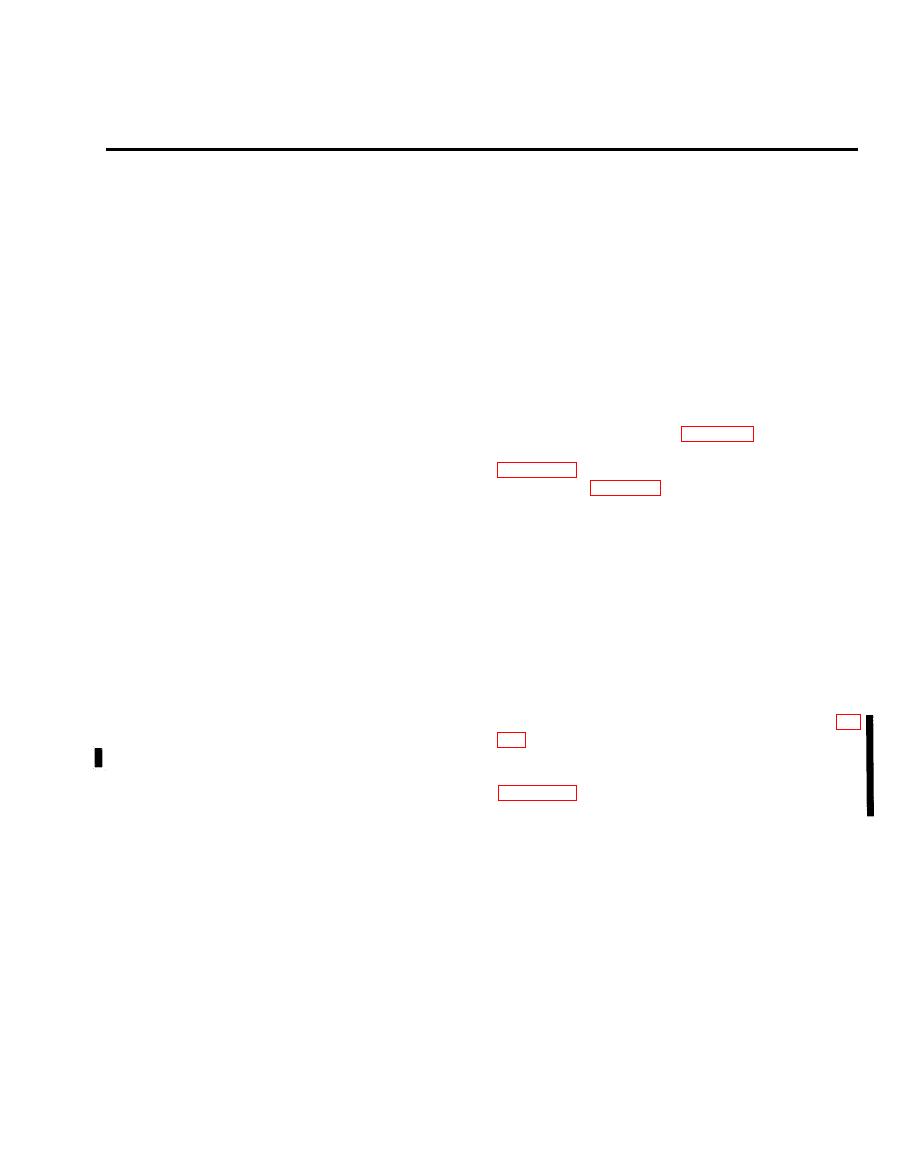 |
|||
|
|
|||
|
Page Title:
Chapter 7. RAIL TRANSPORTABILITY GUIDANCE |
|
||
| ||||||||||
|
|
 TM 55-2320-258-14
RAIL TRANSPORTABILITY GUIDANCE
Section I. GENERAL
7-2. Maximum Use of Railcar Capacity
7-1. Scope
Additional cargo, as approved by the activity offering
This chapter provides transportability guidance for
the HET and C-HET systems for transport, may be
rail movement of the HET and C-HET systems. It
transported on a railcar with the system, provided the
covers significant technical and physical characteristics
railcar weight and dimensional limitations are not
and safety considerations and also prescribes the
exceeded. Do not load additional cargo on the M747
materials and guidance required to prepare, load, and
trailer bed.
tie down the system on open top flatcars.
Section Il. TRANSPORT ON CONUS RAILWAYS
the tiedown position on a railcar by a crane of
7-3. General
adequate capacity (23-ton minimum), or they may be
The transportability guidance contained in this section
driven or towed onto the railcar, provided a suitable
is applicable when the HET and CHET systems are
ramp or bridge is available.
transported on CONUS railways. Consideration is
b. The loads illustrated in figures 7-1, 7-2, and 7-4
given to movements on railcars normally used for this
are based on a flatcar width of 10 feet 6 inches.
type of equipment. Both systems can be transported
without restrictions only at reducible height. Sectiona-
and tiedown. Tables 7-1 through 7-5 provide bills of
lization or major disassembly is not required. Remove
materials and instructions for their application to
warning beacon light from the M746 and the exhaust
secure the system on general-purpose flatcars.
c. Although the truck-tractor and semitrailer are
stack from the M911 to meet height requirement.
illustrated as separate loads, they can be transported
Stow items in the cab.
by rail when connected as a unit on a railcar at least
7-4. Preparation
65 feet long with a minimum load capacity of 39 tons.
NOTE
a minimum, the following preparations should be
As
A staggered nailing pattern should be used when lumber or
accomplished:
laminated lumber is nailed to the floor of a railcar. The
nailing pattern for an upper piece of lumber should be
damage. Place them in stowage compartments or a
adjusted as required so that a nail for that piece will not
wooden crate of suitable size and capacity. If crated,
be driven into or against a nail in the lower piece of
lumber.
secure crate to parent vehicle.
d. The tiedown shown for the semitrailer ramps (fig
b. Remove rearview mirrors from the truck-tractor
and stow them in the cab.
are not provided. One alternative method would be to
"Paragraph c deleted"
restrain the ramp in the upright position as shown in
and securing it on the semitrailer bed.
a. The HET and C-HET systems can be placed in
Change 1
|
|
Privacy Statement - Press Release - Copyright Information. - Contact Us |